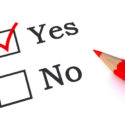Statehood won a clear majority in the plebiscite held on November 3rd, 2020, in Puerto Rico. Votes were cast on both sides. There was not a complete consensus on the best status for Puerto Rico.
As Pedro Pierluisi said when he was Resident Commissioner, “That’s not how democracy works.”
No party called for a boycott, and all parties campaigned for their preference: “yes” or “no.” Everyone who wanted statehood to bring equality and sovereignty to Puerto Rico had the option to vote “Yes.”
Everyone else had the option to vote “No.” There are people who benefit from the current territorial status. There are a few who want independence. There are some who still hope for some kind of “enhanced commonwealth.” There may be some who wanted to insist on a binding vote or who wanted to return to being a colony of Spain. All these groups and more had the option to vote “No.”
The “Yes” for statehood votes outnumbered all of those groups.
People who didn’t vote
Voting is not compulsory in the United States. It is required in Belgium and Argentina, and in several other countries. Australians must pay a fine if they shirk their duty to vote. But the United States doesn’t require anyone to vote.
People choose not to vote for many reasons, from a belief that their vote won’t matter to fear of getting out during the pandemic, preoccupation with other aspects of life to lack of child care. Do you think that people who did not vote either Yes or No were voting against statehood? There is no reasonable basis for that idea.
Turnout for the vote, at more than 52%, was slightly lower than turnout for U.S. presidential races in 2008, 2012, and 2016. The 2020 presidential election had a record turnout.
| 2008 | 57.1% |
| 2012 | 54.9% |
| 2016 | 59.2% |
| 2020 | 66.4% – 72.1% |
Puerto Rico cannot vote in presidential elections. U.S. midterm elections, which do not include presidential races, typically see about a 40% turnout.
The thing about people who don’t vote is that they don’t matter in elections. Statehood opponents would like to say that 52% of 52% is 27%, and therefore 27% voted for statehood and 73% voted against. That is absurd.
According to the same math in the other direction, 25% of all possible voters voted against statehood and therefore 75% voted for statehood. This equation is just as sensible as the anti-statehood party’s claim.
Disenfranchisement
Voters of Puerto Rico actually are disenfranchised when it comes to presidential elections. Even though they are citizens, they are not allowed to vote in presidential elections.
Choosing not to vote is not disenfranchisement. It is simply throwing away a vote. Decisions are made by the people who show up.








One response
Yo espero que la administracion de los democratas, no sigan descriminando al pueblo de Puerto rico. estalidad, now.